 |
 |
 |
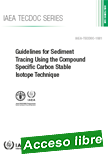 |
Guidelines for Sediment Tracing Using the Compound Specific Carbon Stable Isotope Technique
IAEA TECDOC No. 1881
This publication is intended to support the proper use of the compound specific stable isotope (CSSI) technique for identifying sources of sediment within agroecosystems. Based on the measurement of Carbon-13 natural abundance signatures of fatty acids in the soil, this technique allows to discriminate and apportion the sources soil contribution that originate from different land use.
|
While covering the fundamental concepts of the CSSI technique, this publication is unique in providing step-by-step instructions for scientists, technicians and students on how to effectively use this isotopic approach. This comprehensive illustrated guide highlights new opportunities for improving area-wide soil conservation strategies in fragile agricultural landscapes.
|
 |
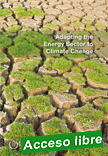 |
Adapting the Energy Sector to Climate Change
This publication explores the diverse range of impacts on the energy sector resulting from gradual climate change and extreme weather events, and the potential ways to counter them. All elements of the supply chain are explored: resource base, extraction and transport of depletable energy sources, power generation, transmission and distribution. The publication includes three case studies which assess the energy sector vulnerability of Argentina, Pakistan and Slovenia.
|
|
 |
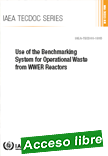 |
Use of the Benchmarking System for Operational Waste from WWER Reactors
IAEA TECDOC No. 1815
The focus of this publication is on benchmarking low and intermediate level waste generated and managed during the normal operating life of a WWER, and it identifies and defines the benchmarking parameters selected for WWER type reactors. It includes a brief discussion on why those parameters were selected and their intended benchmarking benefits, and provides a description of the database and graphical user interface selected, designed and developed, including how to use it for data input and data analysis.
|
The CD-ROM accompanying this publication provides an overview of practices at WWER sites, which were to a large extent prepared using the WWER BMS.
|
 |
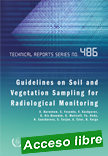 |
Guidelines on Soil and Vegetation Sampling for Radiological Monitoring
Technical Reports Series No. 486
This publication addresses the sampling of soil and vegetation in terrestrial ecosystems, including agricultural, forest and urban environments, contaminated with radionuclides from events such as radiation accidents, radiological incidents and former nuclear activities. It considers sampling strategies and programmes, which are relevant for both emergency and existing exposure situations. |
Practical advice is provided on the design and implementation of sampling programmes for soil and vegetation within the framework of environmental monitoring. Examples of best practice on the formulation of optimized sampling strategies for different exposure situations are given based on the experience and lessons learned from implementation of past and existing programmes.
|
 |
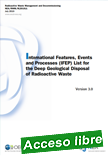 |
International Features, Events and Processes (IFEP) List for the Deep Geological Disposal of Radioactive Waste
This report contains version 3.0 of the IFEP List, which the NEA released in 2019. To coincide with this release, a major revision has also been made to the most-recent NEA FEP Database, transitioning it to a public web-based system accessible from the NEA website.2 This database has been designed to allow full version control and is intended to provide a home for all releases of the IFEP List in the future. |
Version 3.0 of the IFEP List has been updated to reflect the latest relevant scientific understanding with FEPs organised into a hierarchy reflecting their location in the DGR: • External Factors; • Waste Package Factors; • Repository Factors; • Geosphere Factors; and • Biosphere Factors.
|
 |
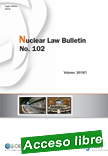 |
Nuclear Law Bulletin No. 102 2019/1
OECD/NEA
The Nuclear Law Bulletin is a unique international publication for both professionals and academics in the field of nuclear law. It provides readers with authoritative and comprehensive information on nuclear law developments. Published free online twice a year in both English and French, it features topical articles written by renowned legal experts, covers legislative developments worldwide and reports on relevant case law, bilateral and international agreements as well as regulatory activities of international organisations.
|
|
 |
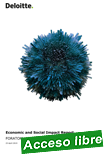 |
Nuclear energy - Powering the economy
The aim of the present study is to analyse the contribution of the nuclear power sector to the overall economy of the European Union. It will assess current economic and social benefits generated directly through the nuclear industry and effects resulting from the nuclear sector’s economic activities throughout the European Union. The analysis was conducted to show both the current impact of the industry and provide a measurable outlook on its future benefits in 2050.
|
The areas of the EU economy analysed in the impact assessment are impact on GDP, job creation, including highly skilled jobs, disposable household income, public revenues and trade balance.
|
 |
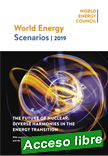 |
Nuclear World Energy Scenarios 2019 Full Report
Recognising the diversity of perspectives on nuclear energy, the World Energy Council (the Council), with contributions from the World Nuclear Association (the Association), has gathered insights from senior energy leaders on the future of the industry. This work has contributed to the Council’s new global nuclear perspectives, which have been fed into an update of the Council’s World Energy Scenarios.
|
In this report, the future of nuclear is described through the lens of the Council’s World Energy Scenarios archetype framework – Modern Jazz, Unfinished Symphony and Hard Rock – in three plausible, alternative pathways for the future development of the sector. This report also describes implications for the role of nuclear energy in the global energy transition.
|
 |
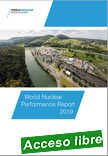 |
World Nuclear Performance Report
The world’s nuclear reactors made a growing contribution to supplying clean and reliable electricity in 2018. Global nuclear generation was 2563 TWh, up 61 TWh on the previous year. At the end of 2018 the capacity of the world’s 449 operable reactors was 397 GWe, up 4 GWe on the previous year. Nine new reactors were connected to the grid, with a combined capacity of 10.4 GWe. Seven reactors were closed down in 2018, with a combined capacity of 5.4 GWe.
|
Of these, four are Japanese reactors that had not generated since 2011, and a fifth, Chinshan 1, had not generated since 2015, so these closures had minimal impact on overall electricity generation in 2018. Four reactors in Japan, with a combined capacity of 5.6 GWe, were given approval to restart. The world’s nuclear plants continue to perform excellently. Growth is strong, with more than 20 new reactors scheduled to be connected before the end of 2020. For the industry to reach the Harmony goal of supplying at least 25% of the world’s electricity before 2050, much greater commitment from policymakers will be required.
|
 |
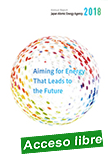 |
Annual Report - Japan Atomic Energy Agency 2018 . Aiming for Energy That Leads to the Future
We have prepared the Japan Atomic Energy Agency Annual Report 2018 based on the following editorial policies as a means for comprehensively reporting on the activities of the Japan Atomic Energy Agency (JAEA). This publication reports on the details of our operations and the state of our R&D for fiscal 2017 (April 2017 - March 2018) and also explains the outlook for fiscal 2018 and beyond as necessary
|
|
 |
| |
|
|

|
|
|
| |
|
|
| |
| |
|
|
| |
| |
|
|
| |
| |
|
|
|
| |
| |
